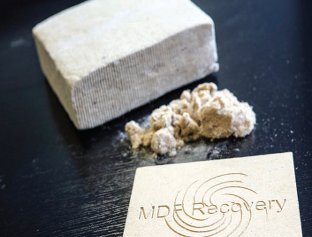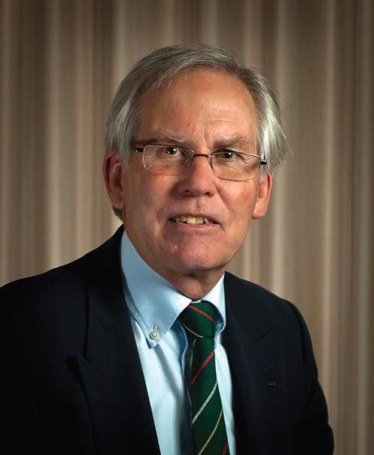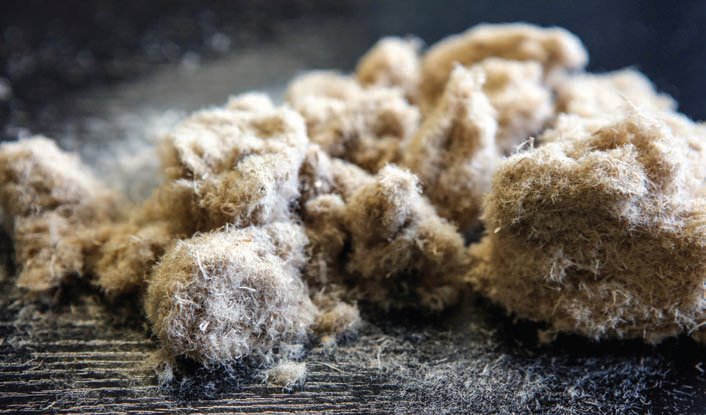Closing the loop
17 May 2017Technology that recovers the fibre from waste MDF could enhance manufacturers’ rawmaterial supply – and the panel product’s environmental credentials. Keren Fallwell reports
A new recycling process for MDF could provide MDF manufacturers with virgin quality feedstock, and significantly reduce their waste.
UK company MDF Recovery has developed technology to recycle waste generated during MDF manufacturing, or from downstream customers, and feed it back into the MDF line. The recovery plant can be retro-fitted to existing MDF facilities or incorporated into new lines.
It is estimated that the UK alone disposes of around 350,000 tonnes of MDF each year, either through landfill or burning, and that’s in addition to the waste generated by MDF manufacturing sites. Until now, MDF has been essentially unrecoverable.
MDF Recovery co-founder and managing director Craig Bartlett, who has developed the technology, led the Furniture Industry Research Association (FIRA) research programme from 1998-2008 and became aware of the magnitude of MDF waste. “MDF recycling was one of the major cost issues in the industry at the time,” said Mr Bartlett.
“The UK alone produces one million m3 of MDF a year. Add that up over the years and there’s a lot of material embedded and in landfill and that will continue to grow as use of MDF grows. A solution needed to be brought to the market.”
During his time at FIRA, the organisation worked with Bangor University to develop a microwave-based MDF recycling process but it was never made available commercially. Since then, developing a viable solution has become Mr Bartlett’s life’s work. Now, after more than six years of research and development, the world’s first MDF recycling technology is ready for the market.
One of the beauties of the patented technology is its simplicity, said Mr Bartlett. The waste MDF is shredded at low speed to minimise the amount of dust created and then soaked in hot water. Using ohmic technology, an electrical current is then passed across the material, which at this stage is effectively a slurry. This raises the MDF’s temperature and breaks apart the resin bonds.
The wood fibres are dried for reuse and the waxes and resins are separated into the water, then dried and pressed for incineration. The water is reused in the continuous cleaning process.
“This heating technique is used in food production as it allows you to cook homogeneously,” said Mr Bartlett. “You heat the whole mass of the material at the same rate. In our case that allows the board to expand and break apart and the result is a very friable material.”
All types of MDF can be recycled, as overlays such as laminates and foils are separated in the process. This allows MDF manufacturers to take back material from their customers and provide a closed loop solution.
“The technology allows for zero waste manufacturing which is a pretty impressive statement for the industry to be able to make,” said Mr Bartlett.
An R&D grant from Innovate UK for Supply Chain Innovation for the Circular Economy allowed the company to build a pilot plant in Chesterfield. This supplemented existing funding from 'angel investors', and led more recently to further investment from international waste management company Suez Recycling and Recovery.
Bangor University’s BioComposites Centre has also been involved with the project and is now making boards from the recycled fibre. An MDF producer is also manufacturing test products.
“Prototyping and pilot scale production are critical when developing a new technology,” said Dr Rob Elias, director of the centre. “Using our flash tube drier, batches of fibre were dried ready for trials. We were then able to make a series of prototypes to demonstrate that the fibres are easily recycled into new products, such as insulation materials and MDF boards.”
Dr Elias is pleased with the test results. “All our tests show that there is no loss in physical or mechanical performance when we use these fibres. The biggest technical challenge is making sure that the fibres are clean and free of laminate contamination. To achieve this we have developed a simple cleaning process using air to separate out the fragments of laminates and we hope to see this scaled-up and employed in MDF Recovery’s commercial plants.”
The Bangor plant is using 100% recycled fibre but Mr Bartlett said commercially this would be a niche product because there wouldn’t be sufficient waste to satisfy demand. The substitution rate is likely to be 20% or lower.
“We know we can substitute at least 20% recycled fibre without any degradation to the quality of the board, or affecting the process in any way,” said Mr Bartlett.
The technology can be integrated into existing or new MDF manufacturing plants, generating new raw material of the same quality as virgin fibre.
Customer preference may well shape the route to market, but at present Mr Bartlett envisages licensing the technology to MDF producers.
“At present, some manufacturers burn their waste, but putting it back into the system would generate better revenues than burning it,” he said. “Also, if they want to grow their production they can retain their current virgin feeds and add recycled fibre. It provides flexibility, feedstock security and cost savings.” New plants would reap the financial benefits almost immediately. “New plants lose an awful lot of material during commissioning so the cost of one of these plants pays for itself instantly,” said Mr Bartlett.
The recovery plant is designed on a modular basis so it can be adapted to meet each customer’s requirements.
“There are a number of places the fibres can be integrated back into the process, and different production methods, so that will dictate what the manufacturer chooses,” said Mr Bartlett, adding that space would also be a deciding criterion. The plant can easily be integrated into an existing line, or housed in a separate building and the fibre blown over.
The recovery technology could also be adopted by waste management and wood recycling companies and an insulation manufacturing plant could be added to the recovery line to produce wood fibre insulation. “The insulation industry is a huge market and it’s an attractive proposition in the UK, where natural fibre insulation products are expensive compared to mineral wool, so they have a low take-up,” said Mr Bartlett. He would like to establish his own insulation business but he has not ruled out licensing the technology to other manufacturers.
The process is also attractive to waste management companies such as Suez, which recently invested £250,000 in MDF Recovery. “Suez is keen to add value to its wood recycling business and has supported us to develop this innovative approach. Biomass plants prefer solid wood over fibreboard as it gives them more predictable burn patterns in the boiler. By separating the MDF it increases the value of all their wood streams; it’s a double benefit for them.”
The technology has already attracted a lot of interest from MDF manufacturers and Mr Bartlett has patented the process in European countries, Eurasia, Indonesia, Malaysia and Korea. Patents are pending in Brazil and India. “We’re getting interest from emerging markets such as Korea and Turkey, where they’re open to innovation and keen to employ techniques that improve business,” said Mr Bartlett.
China also offers huge potential. “The Chinese MDF market is the same size as the total European market and it should be attracted to what we’re doing because they have a limited supply of raw material,” he said.
To help commercialise its technology, MDF Recovery now has an advisory panel of industry experts: Geoff Rhodes, who drove the introduction of Medite MDF to the UK and spent most of his career expanding the use of MDF; Dr Knut Kappenberg, with more than 20 years’ experience in R&D and innovation management, including seven years as global R&D manager at Sonae Industria; Dr Rob Elias; and Ray Howard, a businessman with more than 40 years’ experience in manufacturing and related sectors, including MDF.
While recycled fibre will provide only a fraction of the raw material required for the current global MDF capacity of 100,000,000m3, Geoff Rhodes believes the recycling technology could enhance MDF’s reputation as a sustainable material – one of the product’s strong selling points – when considering raw material sources.
“This recycling technology closes the loop by allowing you to recover the fibre and start the process again,” he said, adding that in doing so it puts in place the last piece in MDF’s environmental credentials.
“We’ve addressed certification of forests and lowered formaldehyde. If we can now say we have a recycling process then it’s a good story for the wood industry as a whole,” said Mr Rhodes.


